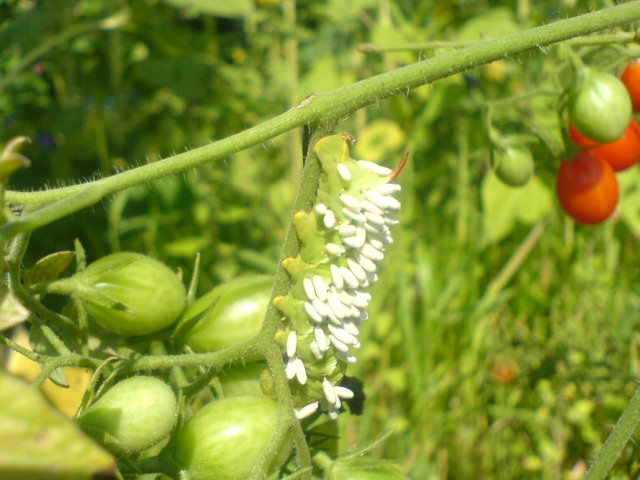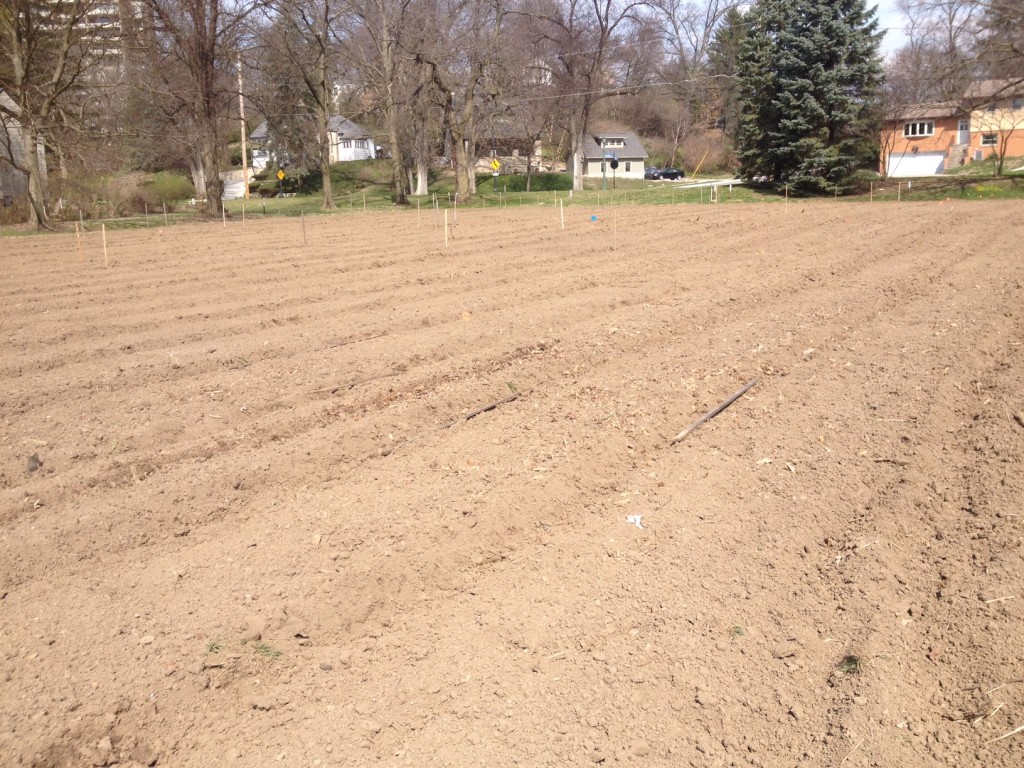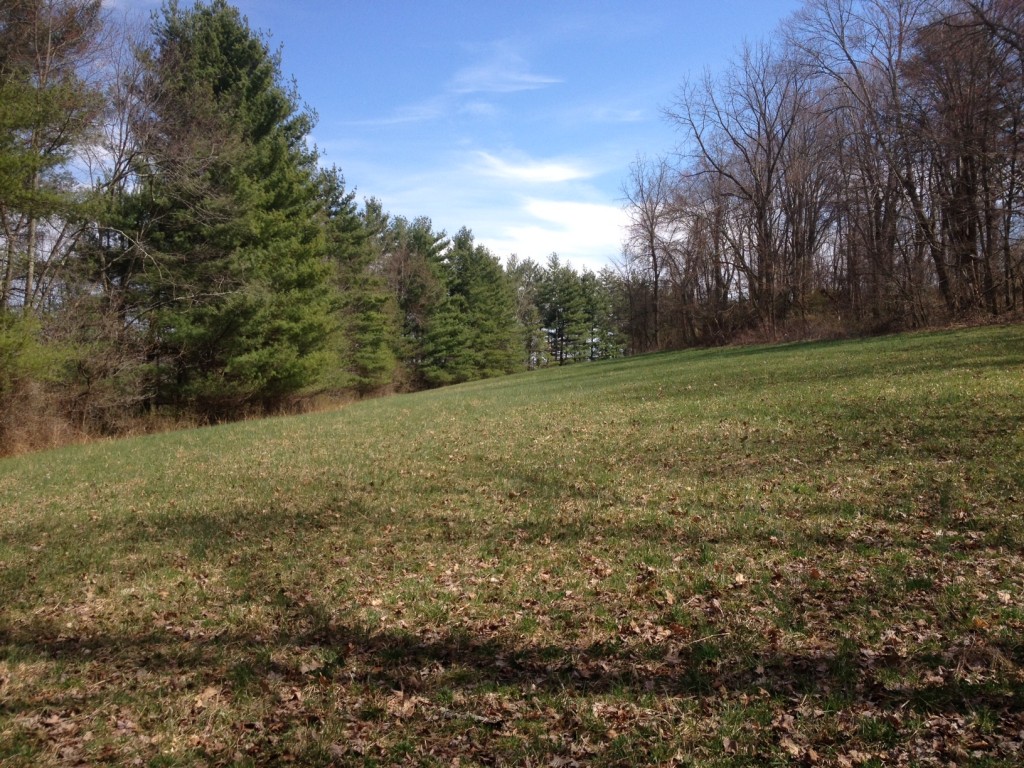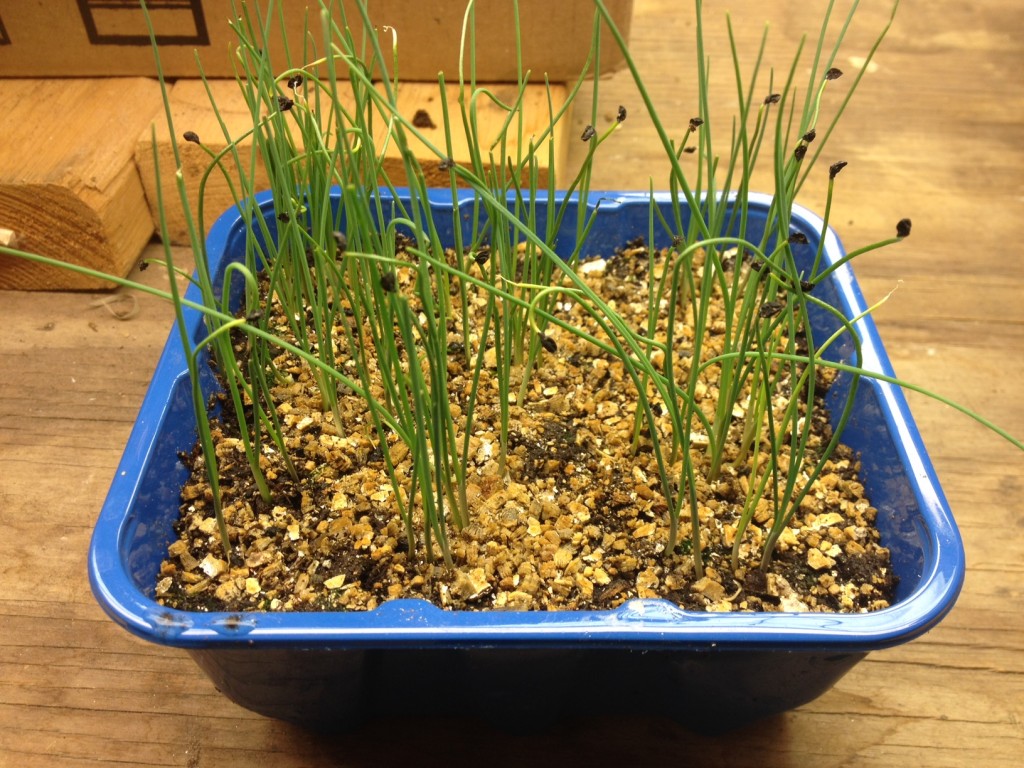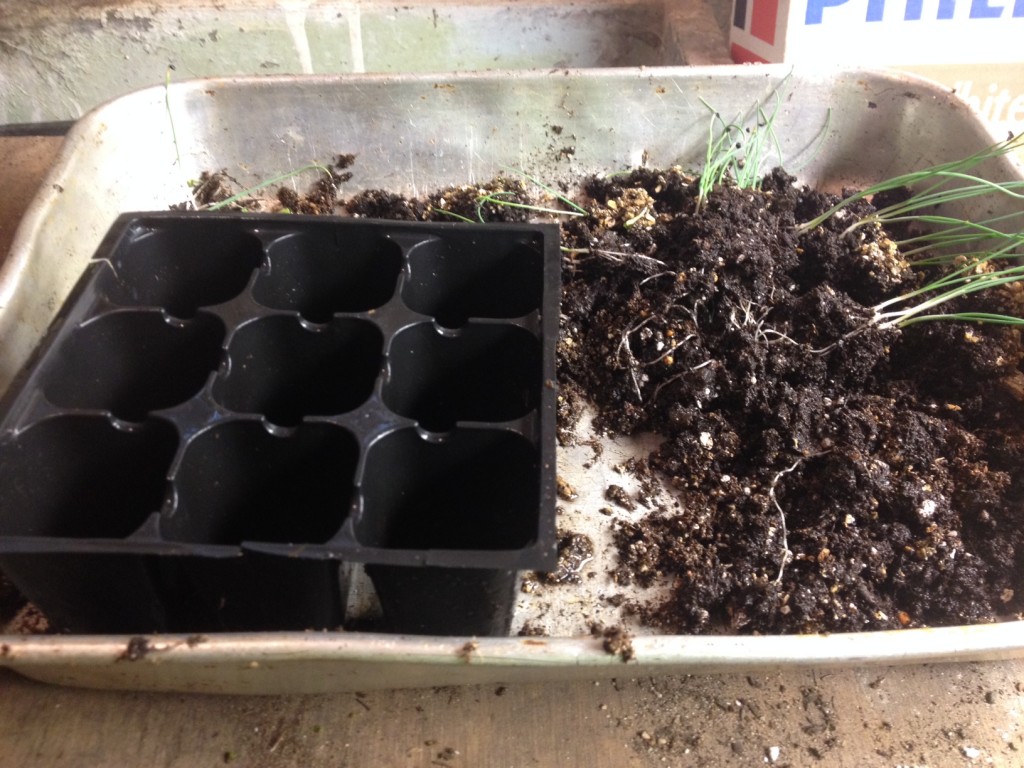We are now ready to put the leeks in the garden. Not a hard step to do and I have layed it all out in pics for you.
To revisit:
- Part 3: Hardening off seedlings
- Part 2: Seedling Maintenance
- Part 1: Sowing Seed
Get a spot ready in the garden. Full sun is important. You could probably get by with 8 hours of sun, but if you can swing it, find a great spot.
You are looking for the greatest amount of the white/blanched stalk of the leek. While all parts of the leaves are edible, the white parts are prized. I dig down about 6 inches deep in my garden.
Next step is to take some fertilizer and finished compost and add it to the bottom of your trenches. This will be the root zone for the leek plants and you will not have another chance to get soil amendments this deep.
While you are digging you might find some stuff you do not want to be in your garden.
Left side: Amazing pernicious perennial weed that roots off small pieces. I think it is a bindweed of some sort.
Right side: Japanese beetle grub – left in the open for the birds
I layed out my seedling about 6″ on center then dug them down another inch or two. Might as well go for State Fair level Leeks if you are planting right?
Once planted, the seedling get a big drink. I will water around the plant letting the soil settle in around gradually while they grow. At this point they are pretty spindly looking things. A little kindness early on will pay off down the road.






